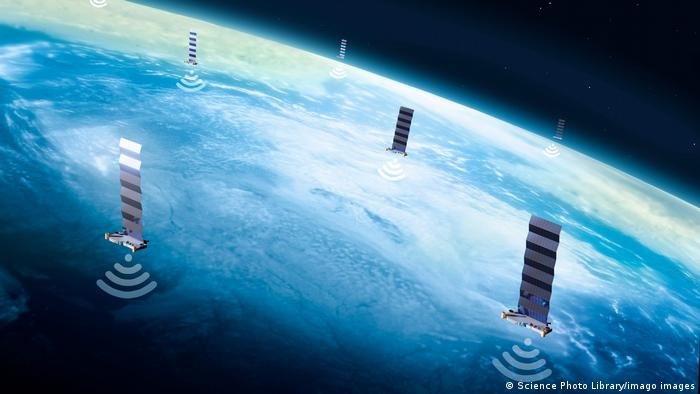
The Starlink system has been playing a significant role in Ukraine’s defense
By Tereza Pultarova,
Published by Space.com, 27 October 2025
The amount of bandwidth provided by SpaceX’s Starlink satellites is limiting Ukraine’s ability to operate ground robots on the frontline of the nation’s war against Russia.
The amount of bandwidth provided by SpaceX’s Starlink satellites is limiting Ukraine’s ability to operate ground robots on the frontline of the nation’s war against Russia, forcing the beleaguered nation’s tech innovators to look for out-of-the-box solutions.

Over the past year, Ukraine dispatched thousands of wheeled ground robots to its frontline military units to help deliver supplies, evacuate the wounded and, in some cases, attack the intruding Russians troops and push them out without risking the lives of Ukrainian soldiers. But the limited bandwidth SpaceX’s satellites can provide means that individual terminals mounted on the UGVs have to make do with as little as 10 megabits per second, which results in poor quality of the video feed used to control the UGVs.
“If you want to drive fast, you need a frame rate of at least 30 frames per second to be able to control the robot,” Vadym Burukin, technologist and CEO of drone start-up Huless, told Space.com. “If you only have ten frames per second and you are moving fast, there is a huge chance that you’re going to end up in a minefield or in a tree.”
SpaceX’s internet-beaming Starlink megaconstellation has been indispensable for Ukraine since the early days of the war. Its terminals keep troops connected on the battlefield but also help guide FPV drones, marine robots and unmanned ground vehicles (UGV) beyond the reach of radio links. According to sources with links to the Ukrainian Ministry of Defense, as many as 200,000 Starlink terminals are active in Ukraine, making the former Soviet republic by far the biggest user of Starlink services in Europe.
But the high number of devices, especially along the frontlines, means the robots can only travel at meager speeds of about 6 miles per hour (10 kilometres), Andriy Dovbenko, Ukrainian entrepreneur and CEO of the Ukrainian Tech Exchange network, told Space.com. Due to that slow speed, the ground robots need up to two hours to cross the 12-mile-wide (20-kilometer) grey zone, where troops and equipment are in constant danger of being destroyed by Russian first-person-view (FPV) drones. “It’s quite slow for [unmanned ground vehicles],” Dovbenko said. “You want to have at least 20 kilometres per hour [24 miles].”
Starlink terminals, Burukin added, also tend to get buggy due to the vibrations of the UGV rolling over rugged terrain. Clouds, rain and even tree canopy overhead can further degrade the signal.

In response, Ukrainian tech innovators are looking for alternatives that would enable the robots to drive faster to increase their chances of completing their missions before they get spotted and bombed by Russian kamikaze drones.
See: Original Article





